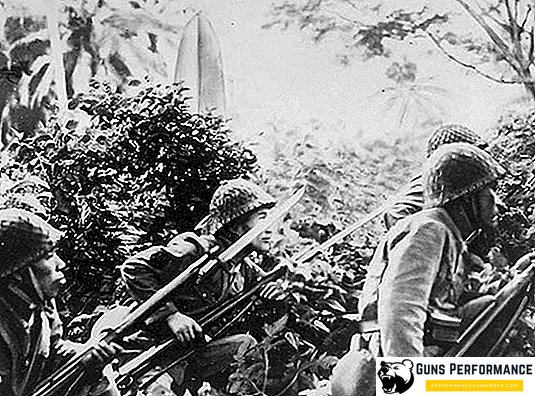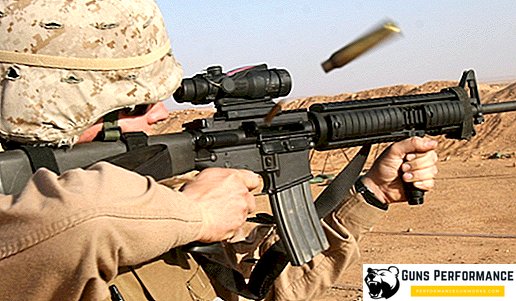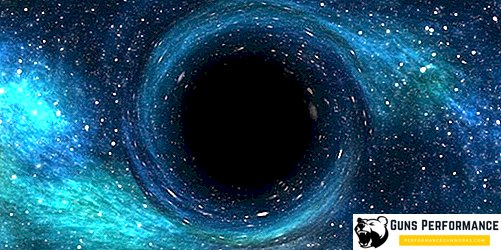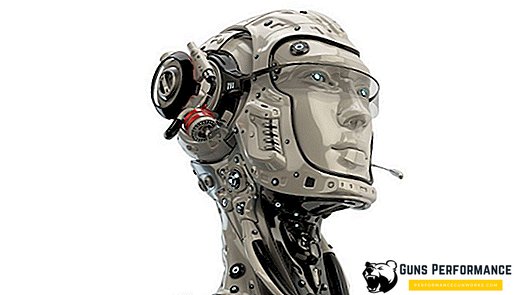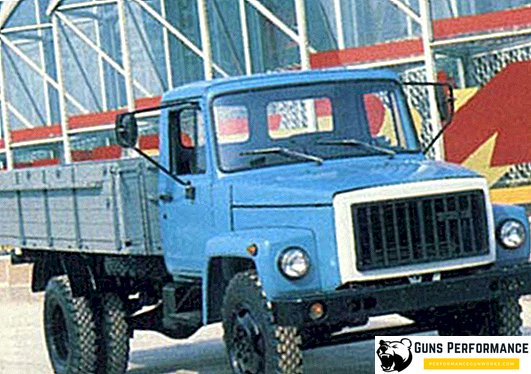GAZ-64 is a Soviet-made vehicle that was used by military commanders and reconnaissance groups during World War II. The 64th model is considered to be the first SUV that reached mass production. The army was used to fulfill numerous goals. On its basis in the future made the GAZ-67.
The history of the GAZ-64
How was the idea born?

For the first time, the creation of a jeep for the Soviet army was started by Tyagunov, who in the American magazine read about a new US development. The engineers considered Bantman BRC40 and Ford Pigmy as the basis. The first car was limited to a lot of 70 pieces, and the British development was planned to be released in the amount of 30 thousand copies.
February 1, 1941 Tyagunov ordered to make a Soviet prototype based on the Pigmy for use in the army. The leadership of the USSR caused the best developer GAZ - V.А. Gracheva He was commissioned to create a new SUV for use in military conditions. The design of the new technology began immediately at the Gorky Automobile Plant - February 3, 1941.
Development and testing of the first version of GAZ-64
To create competition, the work was entrusted to two enterprises - GAZ and NATI. The initial requirements of the military were as follows: a restriction on the track and the length of the car, a payload of more than 400 kg and a working resource reserve of at least 5,000 km. Military experts for a long time could not decide on the final characteristics. The final decision was made on March 22, when the development came to an end. A length of no more than 3.1 m was required, a track of 1.2 m, a wheelbase of 2.1 m and a hood height of 970 mm. For high cross-country weight should not exceed tons with a capacity of four people.
It was planned to immediately three types of jeep. For commanders and reconnaissance groups they wanted to make a phaeton body, and for an artillery tractor - a pickup truck. Commander version had to have a radio station on board, and reconnaissance - a machine gun.
Grachev managed to develop a new SUV for a short time - 51 days (a record for domestic engineering). To speed up the process, the engineer went to the unification of technical units from other modern developments of the Gorky Automobile Plant. The work took place in several stages:
- Creating a model at a scale of 1: 4;
- Finishing the development of the original drawings;
- Delivery of final versions of the drawings;
- The end of the frame assembly;
- Begin assembly of the first prototype;
- Testing of the main technical units;
- End of work on the body;
- Test drive the finished copy.
From March 26 to March 29, there was a demonstration of the new technology to the generals and the people in charge. The phaeton and pickup bodies were abandoned by the designers. They opted for the case with cutouts instead of doors. The machine gun took the area behind the front seats. The final version received wheels from GAZ-M1, although the prototype was equipped with tires from GAZ-A. Some components (for example, the carburetor) were adopted from the KIM-10. The total length exceeded the indicated norms by 40 millimeters, with the remaining dimensions there were no problems.

In April, ground tests under the direction of A.M. Owls in which NATI-AR, GAZ-61, GAZ-64 and Tempo G1200 of German production took part. NATI-AR outperformed competitors in terms of quality, but it required more resources and skilled workers to assemble it. Because of this, the project has not reached an industrial scale.
Model 64 passed 776 kilometers on tests on asphalt and primer roads and complete off-road. To complicate the task, the car towed behind itself an artillery installation. Most of all, the military liked the snow drifts (up to 25 cm deep), which was not inferior to the small class tanks.
The tests ended 5 days earlier than planned, after which they were shown to the first persons of the state in the Kremlin (including Stalin). After a thorough examination, the military specialists made a detailed assessment, which was negative. Mention was made of a small supply of working resource, overheating of the motor on the roads, low permeability and much more. Grachev defended his project, complaining that the car was designed for motorized rifle units, and not for movement in the absence of a normal road.
"Second wind"
Despite the negative reviews, Marshal Kulik liked the new jeep. At the end of April 1941, he sent a letter to the Kremlin in which he spoke of the need for such transport in the Soviet army, complementary to the GAZ-61. He demanded that corrections of the shortcomings revealed in the first tests be corrected and to collect five copies. In June of the same year, a second prototype was developed. The front part of the case was completely reworked, canvas doors were made for the doors, a spare wheel was hung. Hodovka received many technological improvements.
The first tests were planned to be held in July, but the outbreak of the war canceled the plans. GAZ was obliged to collect two copies, on the basis of which they will produce serial batches. On August 20, new cars were delivered to Moscow, where they underwent rapid testing. According to the results of all tasks, it was decided to immediately start mass production.
Design and device GAZ-64

From the 61st model GAZ designers took the chassis, since it was the easiest to produce. The bridges received small changes (the front one was leading), the other mechanisms remained unchanged. To increase the ground clearance of the front of the vehicle, the power unit was set higher than usual.
Specifications:
- Length - 3.7 m;
- Width - 1.5 m;
- Height - 1.9 m;
- Wheelbase - 2.1 m;
- Weight - 1.2 tons.
The base was shortened by 75.5 cm (compared to GAZ-61). Reducing the dimensions allowed to abandon the intermediate cardan shaft. There were no negative consequences from this, with the exception of a slight increase in the parking angle of the front universal joint. Torsional vibrations and vibrations were absent. The front driveshaft was equipped with hinges on needle bearings, which were installed on GAZ-51. In those years, they were just beginning to be used in Gor'kovo.

Under the hood put a four-stroke gasoline engine, which with a volume of 3.28 liters developed up to 50 horsepower (maximum speed - 60 km / h). The power plant worked together with a four-speed manual gearbox (three front and one rear). Razdatku deprived demultiplicator. To connect the motor with a gearbox, a dry-type clutch was used, consisting of a single disc.
Front axle suspension received four quarter-elliptical springs. The design was unreliable due to improper distribution of the load, which led to frequent breakdowns. To increase the reserve of the working resource of springs, threaded pins and bushings from the 11th model were installed in them.
Due to the short base length, there was a galloping effect. It was eliminated by introducing into the design of four single-acting hydraulic shock absorbers (two for each axis). The rear suspension got anti-roll bar. All wheels had cable-type mechanical brake mechanisms with a rigid shaft without equalizers. Activated when you press the pedal or lift the lever.

Quadruple body was open. Rear sofa combined, and the front separate. Behind the front passenger housed a machine-gun with an area for storing ammunition. Some copies were equipped with a walkie-talkie. For quick landing and disembarking the crew, door connectors were not equipped with doors. During precipitation, the body could be closed with an awning that was installed on one arc.
The windshield was mounted in a metal frame. It could be tilted or fixed in a horizontal position. Body assembly was carried out on such a simple technology that sometimes it was done manually. This became possible due to the use of bent in one plane forms. The sheets were joined together by spot welding. Many elements of the design of the front part are taken from GAZ-AA (in particular, the upper part of the radiator housing with the emblem, the main gas tank of 43 liters and the instrument panel).
To speed up the design, all electrical appliances were taken from GAZ-M1 and MM. To simplify the device left the necessary sensors and indicators. The developers abolished the oil meter (it was not necessary due to the low pressure in the system) and a water thermometer. A power outlet for portable flashlights was added to the electrical circuit.
The main tires GAZ-64 were sized 6.50-16 and equipped with lugs. They were specially developed by the Yaroslavl enterprise. The soldiers liked them so much that they were used on military off-road vehicles until 1958. During the Second World War there was a shortage of such wheels, so some instances of “shoes” in tires 7, 00–16, which were used on the M1. They had a low cross, as the tread pattern was performed on the road type.
Production and distribution of GAZ-64
The first batch of cars in the amount of 42 copies released in August of the 41st year. They were collected by bypass technology to speed up production. By the end of the year, collected 601 cars. All transport was sent into service of reconnaissance units. In December of the same year, production stopped, since the production of light tanks and the assembly of jet mines were transferred to the capacity of the Gorky enterprise.
The next year, the rate of release fell, almost ten times. Engineers managed to release 67 copies, and most of them in July. In 1943, the 64th model came to a standstill - three improved series cars came out of the walls of GAZ shops, which received an "B" index. The main difference was the expansion of the front axle gauge.
The main part of the vehicle was used as artillery tractor. Some cars, like the military commanders, were used as staff. In two years, 672 vehicles of this model came to light.
On the basis of the GAZ-64 produced BA-64 armored car, which had a higher demand during the war. For the year they collected a little less than four thousand armored cars. The SUV was replaced with an improved 67th model at the end of 1943.
What can be concluded?

The GAZ-64, despite its short history, served a huge role in domestic engineering. In the future, many Soviet off-road vehicles were used on its basis, which were used not only to resolve local conflicts, but also international ones. For its time, the design turned out to be advanced, even though it was made with an eye to the British transport.



